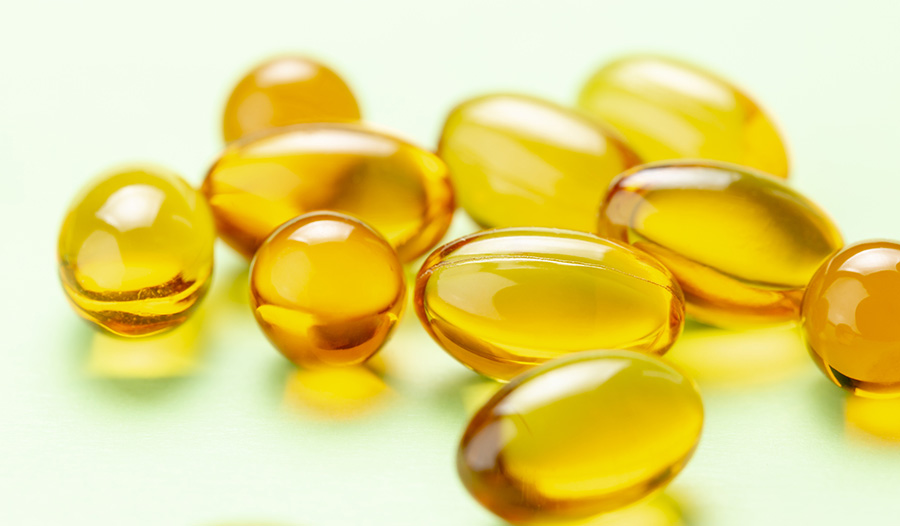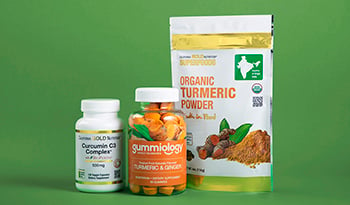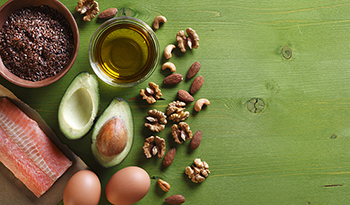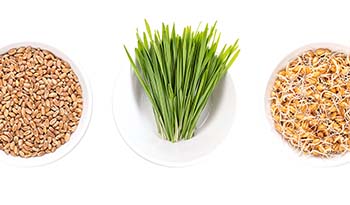Are you Deficient in These Fat-Soluble Vitamins?

In the early 20th century, it was believed that humans only required four types of nutrients: proteins, carbohydrates, fats, and minerals. Since then, our understanding of health and nutritional needs has greatly evolved. This is especially true when it comes to preventing illness, chronic disease, and general disability.
One of the most important things we’ve come to understand about health is that severe deficiency of certain vitamins can lead to well-known diseases such as:
- Rickets caused by vitamin D deficiency
- Pellagra caused by niacin deficiency
- Scurvy caused by vitamin C deficiency
- Beriberi caused by vitamin B1 (thiamine) deficiency
In the advent of “food fortification” and improved food supplies around the world, it was assumed that vitamin deficiencies had been widely eliminated. However, more recently, we’ve learned that a person’s unique genetics, lifestyle, exposure to environmental toxins, and antioxidant intake create unique requirements of certain vitamins and minerals for some individuals, which may be greater than another’s needs. Further, the absence of certain diseases does not indicate that a person is meeting their nutrient needs.
Each of us fits into one of these categories:
- You are deficient in one or more nutrients
- You have the exact amount of every nutrient you need at any given time
- You have excess amounts of one or more specific nutrient, which will either be stored or excreted.
The first scenario is one that demands attention. According to a 2006 report by the World Health Organization (WHO) one in three people around the world is deficient in a variety of vitamins and/or minerals. This is a problem that can affect generations. When children and pregnant women are affected by vitamin deficiency, the long-term health consequences can be dire. These deficiencies are not only seen in underweight individuals — overweight and obese individuals can also be significantly deficient in nutrients.
Fat-Soluble Vitamins vs. Water-Soluble Vitamins
Vitamins are classified into two main categories: water-soluble and fat-soluble. Water-soluble vitamins are so named because they dissolve in water, which means they’re generally not stored in the body and must be consumed. This is in contrast to fat-soluble vitamins, which are absorbed with the aid of fat.
Fat-soluble vitamins require fat in the diet in order to be absorbed. These vitamins are stored in the liver and fat tissue of the body and may be available for use when needed. |
Vitamin A
Vitamin A is a powerhouse nutrient, yet it is the most common vitamin deficiency worldwide. It is a potent antioxidant that comes in two forms: provitamin A is found in plants and preformed vitamin A is found in animal products.
When vitamin A is lacking in a person’s diet, the results can be catastrophic, especially in children. Vitamin A is crucial for development of healthy vision, immune system strength, and future reproduction. According to the World Health Organization, more than 250 million preschool-aged children are deficient around the world. Women who are pregnant and deficient in vitamin A are at risk for night blindness, while a fetus without sufficient levels of vitamin A is at risk for developmental issues.
Risk Factors for Vitamin A Deficiency
- Diet low in dairy and eggs
- Inadequate intake of fruits
- Low intake of vegetables
Many plant-based foods contain beta carotene (pro-vitamin A), the precursor to vitamin A. These carotenoids, as they are called, play an important role in overall health.
Symptoms and Complications of Vitamin A Deficiency
- Blindness and night blindness
- Diarrhea
- Dry flaky skin
- Increased risk of infection
- Increased risk for miscarriage
Food Sources of Vitamin A
- Liver
- Cod liver oil
- Spinach
- Carrots
- Pumpkin
- Tomatoes
- Red bell peppers
- Milk
- Eggs
Consuming a quality multivitamin with vitamin A is important, and in some cases, a separate vitamin A supplement may be needed. However, this should be discussed with your doctor first.
Vitamin A toxicity can occur when excessive amounts, 25,000 IU daily or more, of preformed vitamin A are consumed.
It is also believed that too much vitamin A may interact with the beneficial actions of vitamin D. Beta-carotene has no known toxic effects or upper limit when eaten as a food. However, some can develop a reversible orange color in their skin, a condition called beta-carotenemia, when large amounts are consumed.
Smokers should be extra cautious about supplementing with vitamin A as it may increase lung cancer risk, according to some studies. A physician should be consulted first.
Vitamin D
Thousands of studies over the last decade show health benefits when one optimizes vitamin D intake. These studies tell us that those with higher levels of vitamin D in their blood have lower risk for heart attacks, breast cancer, colon cancer, multiple sclerosis, type 1 and type 2 diabetes, high blood pressure, and other health complications.
Deficiency is common. Even in my Southern California medical practice, a place where we have sunny skies more than 300 days per year, four in five (80 percent) patients have clinical vitamin D deficiency, defined by a blood level 30 ng/ml (75 nmol/l) or lower.
Low Levels of Vitamin D are Associated with Increased Risk for the Following:
- Autism
- Auto-immune conditions
- Dementia
- Fibromyalgia
- Heart disease/high blood pressure
- Cancer (colon breast, ovarian, prostate)
- Osteopenia and osteoporosis
- Stroke, heart disease, and peripheral artery disease
Adequate sunlight exposure is important for overall health and wellness. Most deficient adults will need to take a daily dose of Vitamin D (cholecalciferol), ranging 2,000-5,000 IU of vitamin D. Some may need more.
Pregnant women and mothers who are breastfeeding should also consider supplementing with vitamin D at 5,000 IU daily. Vitamin D can be taken by most healthy children from 1 to 18 years of age. The usual dose is between 1,000-2,000 IU daily.
Vitamin E (α-tocopherol)
Vitamin E can be stored in fat tissue, in addition to the liver. It provides antioxidant protection from free radicals, and when deficiency is present, the risk of increased cellular oxidation and nerve damage grows. While many physicians believe vitamin E deficiency is rare overall, recent research has called this long-held belief into question.
A 2019 study from Asia and published in the International Journal of Vitamin and Nutrition Research suggests vitamin E deficiency affects up to 67 percent of infants, 80 percent of children, 56 percent adolescents, and up to 72 percent of elderly and pregnant women. Likewise, a 2015 study from South Korea found that 23 percent of those aged 20-59 had inadequate levels of vitamin E (α-tocopherol). Lastly, a 2006 study in the United States of children aged 2 to 5 years of age showed that 68 percent of American children had deficient blood levels of vitamin E.
Causes and Risks for Vitamin E Deficiency
- Premature birth
- Poor dietary intake of specific foods (see list below)
- Malabsorption syndromes (leaky gut, celiac disease, crohn’s disease, ulcerative colitis)
- Familial isolated vitamin-E deficiency (rare genetic disorder)
Symptoms of Vitamin E Deficiency
- Neurological and brain issues
- Neuropathy
- Anemia
- Fatigue
- Muscle weakness
- Vision problems (retinopathy)
- Impaired immune system
Food Sources of Vitamin E
- Fish (abalone, Atlantic salmon, trout)
- Nuts (almonds, hazelnuts, peanuts, pine nuts)
- Seeds (sunflower seeds)
- Green leafy vegetables (spinach, kale, broccoli, red sweet pepper)
- Wheat germ oil
- Avocados
When diet is not enough, taking a quality multivitamin each day can help ensure one is getting enough vitamin E. When that is not enough, some may take separate vitamin E supplements at a dose of 200 to 400 IU per day. Most should avoid supplementing in excess of 1,000 IU per day.
Vitamin K
Vitamin K is a fat-soluble vitamin that plays an important role in bone, brain, and overall blood health. It is available in three main forms:
- Vitamin K1 (phylloquinone)
- Vitamin K2 (menaquinone)
- Vitamin K3 (menadione)
Vitamin K1 is found primarily in green leafy vegetables, while vitamin K2 is commonly bacterial (gut bacteria) in origin and also comes from fermented foods and animal-based foods, such as meats and dairy. Vitamin K3 is synthetically manufactured and added to some supplements.
Many healthy bacteria, which reside in our intestines (gut microbiome), can manufacture vitamin K2. When a person is placed on antibiotics, vitamin K2 production can be impaired as healthy bacteria are killed by the antibiotic drug. It is believed that this may be a leading reason those on the blood thinner coumadin (warfarin) may see a change in their “blood thinness” when certain medications are taken or if a diet abnormally high in green leafy vegetables is consumed.
Those with low levels of vitamin K in their blood are also at increased risk for bone weakening such as osteopenia and osteoporosis. Low levels of vitamin K are also associated with an increased risk for heart disease, which is likely one of the reasons green leafy vegetables are good for overall heart and vascular health.
Risks and Causes of Vitamin K Deficiency
- Newborns are at increased risk (which is why many hospitals around the world give babies a vitamin K shot when born)
- Poor dietary intake of specific foods (see list below)
- Weight-loss surgery (bariatric)
- Malabsorption syndromes (leaky gut, celiac disease, Crohn’s disease, ulcerative colitis)
- Chronic or frequent antibiotic use
Symptoms of Vitamin K Deficiency
- Easy bruising
- Heavy menstrual periods
- Bleeding gums
Food Sources of Vitamin K
- Green leafy vegetables (kale, spinach, collard greens, broccoli, green leaf lettuce, etc.)
- Fish
- Liver/meat (beef, pork)
- Poultry (chicken, turkey)
- Eggs
- Prunes
- Cheese
- Avocados
Ideally, an individual’s needs for vitamin K should be met with a healthy diet and achieving optimal gut health. Most quality multivitamins contain vitamin K, and those worried about bone and heart health may need additional vitamin K supplementation. Anyone taking blood thinners prescription medication coumadin (warfarin) should not take vitamin K without first consulting with a physician.
References:
- GUIDELINES ON FOOD FORTIFICATION WITH MICRONUTRIENTS 2006 https://apps.who.int/iris/bitstream/handle/10665/43412/9241594012_eng.pdf?ua=1
- Nutr Cancer. 2009;61(6):767-74. doi: 10.1080/01635580903285155. Lung Cancer risk and Beta-Carotene
- Internatonal Journal of Vitamin Nutrition Research. 2019 May 24:1-14. doi: 10.1024/0300-9831/a000590. (Vitamin E deficiency in Asia)
- Kim YN, Cho YO. Vitamin E status of 20- to 59-year-old adults living in the Seoul metropolitan area of South Korea. Nutr Res Pract. 2015;9(2):192–198. doi:10.4162/nrp.2015.9.2.192
- Elder SJ, Haytowitz DB, Howe J, Peterson JW, Booth SL. Vitamin K contents of meat, dairy, and fast food in the U.S. Diet. J Agric Food Chem 2006;54:463-7.
DISCLAIMER:This Wellness Hub does not intend to provide diagnosis...














































































 Table of Contents
Table of Contents
















